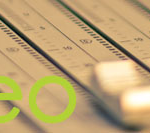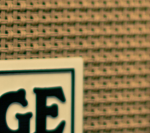Now, let’s take a look at things guitar and bass players can do to prepare.
For both instruments, before anything, make sure it is setup by a professional. Ensuring that the action is comfortable, the intonation is accurate, the pickup height is adjusted, and the electronics are clean. You should have this done annually anyways, but especially when you’re recording.
For bass, if it is an active instrument, make sure it has a fresh battery, and consider bringing extras.
For guitars, it’s very important to KNOW YOUR PART. I know that sounds obvious, but if you’re aiming for modern big guitar tones, you’ll likely want to double track your parts. When doing that, you need to be able to replicate what you play as closely as possible.
Understand that the tone that you use live rarely works in the studio.
Example: Jimmy Page is known for the Marshall full stack and a Les Paul, but the majority of those ‘classic’ tones were actually recorded on a tiny 5 watt combo amp.
Be prepared to try new things in order to find your tone. Chances are your engineer (or myself) will know the studio’s amps, cabs, speakers, mics, preamps, and room. Trust them to help find best recorded tone for your record. A lot of bands just bring their guitars, and leave their amps at home. Although, if you have a special, unique, or rare item, it’s worth bringing it with.
Lastly, it’s smart to plan out extra guitar parts that act as additional production tracks. The core of the latest Green Day single may just be 4 power chords, but there are layers of additional tracks, to help provide the depth to their mix and help them get such a huge sound. These parts aren’t necessarily leads, nor are they something that you’d play live. They are just little things that would help expand the sound of the arrangement.
Good Luck!



